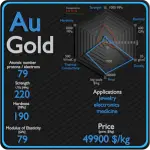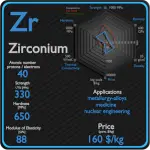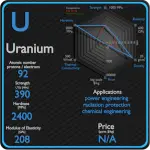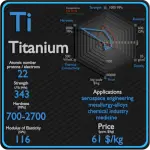This article contains comparison of key thermal and atomic properties of titanium and zirconium, two comparable chemical elements from the periodic table. It also contains basic descriptions and applications of both elements. Titanium vs Zirconium.
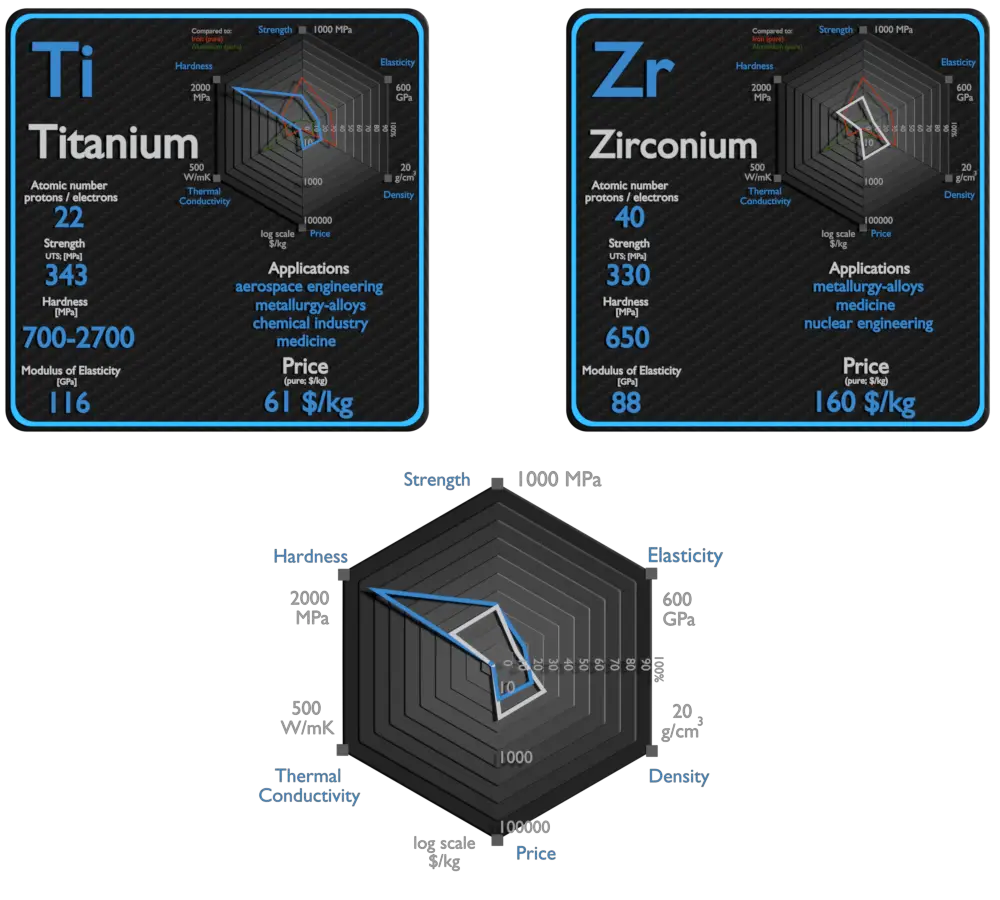
Titanium and Zirconium – About Elements


Source: www.luciteria.com
Titanium and Zirconium – Applications
Titanium
The two most useful properties of the metal are corrosion resistance and strength-to-density ratio, the highest of any metallic element. The corrosion resistance of titanium alloys at normal temperatures is unusually high. These properties determine application of titanium and its alloys. The earliest production application of titanium was in 1952, for the nacelles and firewalls of the Douglas DC-7 airliner. High specific strength, good fatigue resistance and creep life, and good fracture toughness are characteristics that make titanium a preferred metal for aerospace applications. Aerospace applications, including use in both structural (airframe) components and jet engines, still account for the largest share of titanium alloy use. On the supersonic aircraft SR-71, titanium was used for 85% of the structure. Due to very high inertness, titanium has many biomedical applications, which is based on its inertness in the human body, that is, resistance to corrosion by body fluids.
Zirconium
Most zircon is used directly in high-temperature applications. This material is refractory, hard, and resistant to chemical attack. Because of these properties, zircon finds many applications, few of which are highly publicized. Its main use is as an opacifier, conferring a white, opaque appearance to ceramic materials. Zirconium and its alloys are widely used as a cladding for nuclear reactor fuels. Zirconium alloyed with niobium or tin has excellent corrosion properties. The high corrosion resistance of zirconium alloys results from the natural formation of a dense stable oxide on the surface of the metal. This film is self healing, it continues to grow slowly at temperatures up to approximately 550 °C (1020 °F), and it remains tightly adherent. The desired property of these alloys is also a low neutron-capture cross-section. The disadvantages of zirconium are low strength properties and low heat resistance, which can be eliminated, for example, by alloying with niobium.
Titanium and Zirconium – Comparison in Table
| Element | Titanium | Zirconium |
| Density | 4.507 g/cm3 | 6.511 g/cm3 |
| Ultimate Tensile Strength | 434 MPa, 293 MPa (pure) | 330 MPa |
| Yield Strength | 380 MPa | 230 MPa |
| Young’s Modulus of Elasticity | 116 GPa | 88 GPa |
| Mohs Scale | 6 | 5 |
| Brinell Hardness | 700 – 2700 MPa | 650 MPa |
| Vickers Hardness | 800 – 3400 MPa | 900 MPa |
| Melting Point | 1668 °C | 1855 °C |
| Boiling Point | 3287 °C | 4377 °C |
| Thermal Conductivity | 21.9 W/mK | 22.7 W/mK |
| Thermal Expansion Coefficient | 8.6 µm/mK | 5.7 µm/mK |
| Specific Heat | 0.52 J/g K | 0.27 J/g K |
| Heat of Fusion | 15.45 kJ/mol | 16.9 kJ/mol |
| Heat of Vaporization | 421 kJ/mol | 591 kJ/mol |



